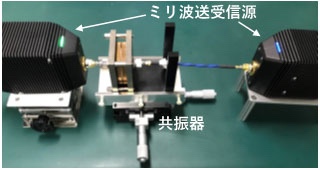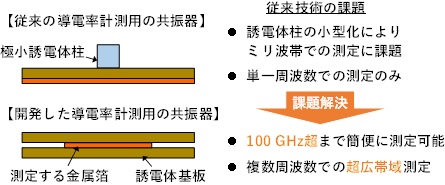

日本6G:AIST电磁场分析算法:开发低功耗材料
AIST:
100 GHz频带中的介电常数测量:
2020年6月,它宣布已开发出一种技术,可以测量高达100 GHz以上频带的金属材料的介电常数。
我们正在加快用于6G(第六代移动通信)系统的低功耗的高频电路材料的开发。
日本6G系统:
日本的6G系统计划于2030年左右推出。
为了实现高速,大容量的通信,正在考虑利用100 GHz以上的频带。
实现6G的挑战:
即使在高频下
开发减少电路传输损耗的材料,
测量技术的实现证明了这一特性。
EE Times日本
https://eetimes.jp/ee/spv/2006/23/news029.html
AIST: Ultra-wideband material measurement technology for post 6G low power consumption
Important point
Realized a technology to easily measure metal conductivity in the ultra-wide band from 10 GHz to over 100 GHz
Development of electromagnetic field analysis algorithm that determines conductivity strictly from the sharpness of resonance characteristics
Expected to contribute to the development of advanced materials for low power consumption of next-generation, high-speed, large-capacity communication
Overview
Conductivity measurement of metallic materials
We have developed a technology to easily measure the conductivity of metallic materials used in high-frequency planar circuits over an ultra-wide band up to over 100 GHz.
It is expected that over 100 GHz frequency will be used to realize 6G high-speed and large-capacity communication.
Relationship between transmission loss and frequency
Generally, the transmission loss that affects the power consumption of a circuit increases as the frequency increases.
Therefore, the development of advanced materials with low power consumption is strongly required to realize 6G.
High frequency circuit transmission loss
In a high frequency circuit, the transmission loss of the entire circuit is determined by the dielectric loss of the dielectric substrate and the conductor loss determined by the conductivity of the metal line.
Problems with millimeter wave band and low conductivity
The surface of the dielectric is roughened in order to maintain the adhesiveness between the metal and the dielectric, but in the millimeter wave band, the reduction in conductivity due to the roughening has been a problem.
Conventional problem: Conductivity measurement by resonator
However, conventional conductivity measurement requires a resonator consisting of a very small dielectric pillar.
Also, since it is determined by the dielectric pillar and size, it is possible to measure only a single frequency.
Therefore, no technique has been established for easily measuring metal conductivity in the 100 GHz superfrequency band.
This solution: use of electromagnetic field analysis algorithm
This time, we created a dielectric resonator with a metal foil sandwiched between dielectric substrates.
Calculate the sharpness of the resonance characteristics of the higher-order mode excitation for this dielectric resonator,
We have developed an electromagnetic field analysis algorithm that can determine conductivity accurately.
Realization of electromagnetic field analysis algorithm
A simple measurement system algorithm that does not require precise machining of dielectrics.
The metal conductivity can be measured easily and with the same accuracy as conventional technology over the ultra-wide band from 10 GHz to over 100 GHz.
Future high frequency development:
This time, the measurement was limited to 110 GHz.
Dielectric constant measurement:
On the other hand, in permittivity measurement, a resonator capable of inputting a 170 GHz signal has been demonstrated using a micro coaxial line.
Conductivity measurement:
We are currently developing a higher frequency for conductivity measurement.
The technology developed this time can accelerate the development of advanced materials toward lower power consumption of 6G.
For more information on this technology, please see the International Microwave Symposium (IMS) 2020 online conference.
Announced on the website on June 21, 2020.
https://www.aist.go.jp/aist_j/press_release/pr2020/pr20200621/pr20200621.html